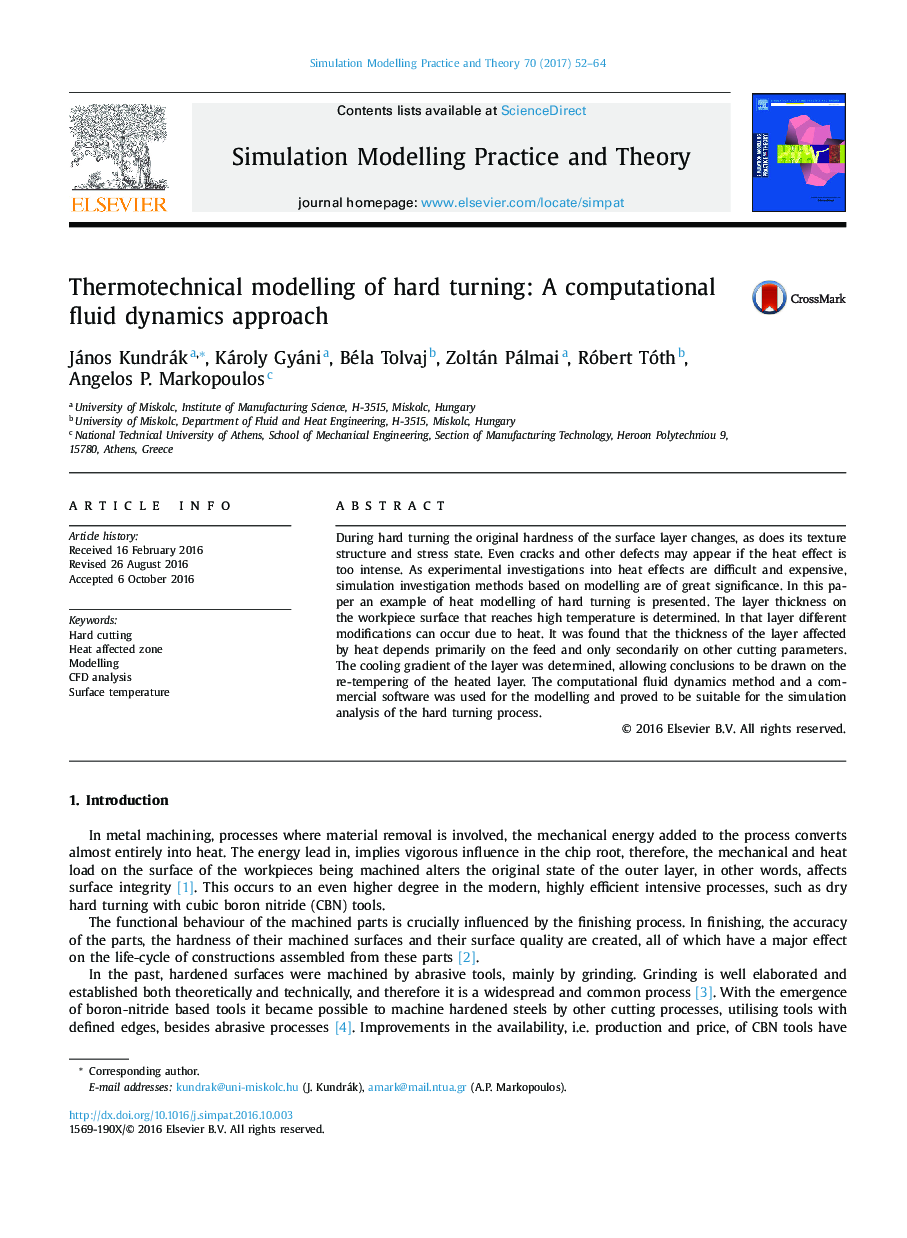| کد مقاله | کد نشریه | سال انتشار | مقاله انگلیسی | نسخه تمام متن |
|---|---|---|---|---|
| 4962734 | 1446657 | 2017 | 13 صفحه PDF | دانلود رایگان |
عنوان انگلیسی مقاله ISI
Thermotechnical modelling of hard turning: A computational fluid dynamics approach
ترجمه فارسی عنوان
مدلسازی ترمودینامیکی تبدیل سخت: یک رویکرد دینامیکی مایع محاسباتی
دانلود مقاله + سفارش ترجمه
دانلود مقاله ISI انگلیسی
رایگان برای ایرانیان
کلمات کلیدی
ترجمه چکیده
در طول سخت تغییر سختی اصلی لایه سطح تغییر می کند، همانطور که ساختار بافتی و حالت استرس آن. اگر اثر گرما بیش از حد شدید، ممکن است حتی ترک ها و نقایص دیگر ظاهر شود. به عنوان تحقیقات تجربی در مورد اثرات گرمایشی دشوار و گران است، روشهای شبیه سازی بر اساس مدلسازی اهمیت زیادی دارند. در این مقاله، نمونه ای از مدل گرما چرخشی سخت ارائه شده است. ضخامت لایه در سطح قطعه کار که به دمای بالا می رسد، تعیین می شود. در این لایه تغییرات مختلف ممکن است به علت گرما رخ دهد. مشخص شد که ضخامت لایه ای که تحت تأثیر گرما قرار می گیرد، بیشتر به تغذیه بستگی دارد و تنها به طور ثانویه بر روی سایر پارامترهای برش. گرادیان خنک کننده لایه تعیین شده است که اجازه می دهد بر روی خنک کردن لایه گرمایی کاسته شود. روش دینامیک سیالات محاسباتی و نرم افزار تجاری برای مدل سازی استفاده شد و برای تجزیه و تحلیل شبیه سازی روند چرخش سخت مناسب بود.
موضوعات مرتبط
مهندسی و علوم پایه
مهندسی کامپیوتر
علوم کامپیوتر (عمومی)
چکیده انگلیسی
During hard turning the original hardness of the surface layer changes, as does its texture structure and stress state. Even cracks and other defects may appear if the heat effect is too intense. As experimental investigations into heat effects are difficult and expensive, simulation investigation methods based on modelling are of great significance. In this paper an example of heat modelling of hard turning is presented. The layer thickness on the workpiece surface that reaches high temperature is determined. In that layer different modifications can occur due to heat. It was found that the thickness of the layer affected by heat depends primarily on the feed and only secondarily on other cutting parameters. The cooling gradient of the layer was determined, allowing conclusions to be drawn on the re-tempering of the heated layer. The computational fluid dynamics method and a commercial software was used for the modelling and proved to be suitable for the simulation analysis of the hard turning process.
ناشر
Database: Elsevier - ScienceDirect (ساینس دایرکت)
Journal: Simulation Modelling Practice and Theory - Volume 70, January 2017, Pages 52-64
Journal: Simulation Modelling Practice and Theory - Volume 70, January 2017, Pages 52-64
نویسندگان
János Kundrák, Károly Gyáni, Béla Tolvaj, Zoltán Pálmai, Róbert Tóth, Angelos P. Markopoulos,
